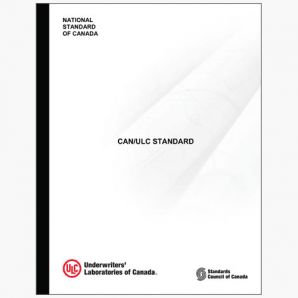
ULC CAN/ULC-S127-14 Sixth Edition Standard Corner Wall Method of Test for Flammability Characteristics on Non-Melting Foam Plastic Building Materials
More About This Product
There were no major changes made to the Standard. Updates were made to the existing Reference Standards and “Smoke Developed Value (SDV)” was removed as a defined term as it is not referenced anywhere within the Standard.
This method of test for flammability characteristics is applicable to certain low density insulating materials that do not melt or drip during exposure to fire (see Appendix A). It is used in establishing the Flame Spread Classification for those foamed plastics whose flammability assessment found in CAN/ULC-S102, Standard Method of Test for Surface Burning Characteristics of Building Materials and Assemblies, requires the use of the rate formula FSV = 92.5 d/t but where the necessary parameters (’d’ & ’t’) for use in the formula are difficult to define.
The purpose of this test is to determine the comparative burning characteristics of the material under test by exposing the material in a corner wall configuration to a test fire.
It is the intent of this method to register performance during the period of exposure and not to determine suitability for use after the test exposure.
There were no major changes made to the Standard. Updates were made to the existing Reference Standards and “Smoke Developed Value (SDV)” was removed as a defined term as it is not referenced anywhere within the Standard.
This method of test for flammability characteristics is applicable to certain low density insulating materials that do not melt or drip during exposure to fire (see Appendix A). It is used in establishing the Flame Spread Classification for those foamed plastics whose flammability assessment found in CAN/ULC-S102, Standard Method of Test for Surface Burning Characteristics of Building Materials and Assemblies, requires the use of the rate formula FSV = 92.5 d/t but where the necessary parameters (’d’ & ’t’) for use in the formula are difficult to define.
The purpose of this test is to determine the comparative burning characteristics of the material under test by exposing the material in a corner wall configuration to a test fire.
It is the intent of this method to register performance during the period of exposure and not to determine suitability for use after the test exposure.
